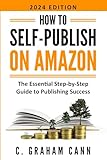Banned in the Media
A Reference Guide to Censorship in the Press, Motion Pictures, Broadcasting, and the Internet

|
|
Introduction
The 1996 Oxford Modern English Dictionary defines the "media" as "the
main means of mass communication (esp. newspapers and broadcasting)." The
1995 Cambridge Paperback Encyclopedia ( David Crystal , ed., 2d ed., 1995) says
"media" is "a collective term for television, radio, cinema,
and the press." This book will use these standard definitions, with one
modification: the inclusion of the Internet, the newest and most controversial
form of mass communication.
There is little doubt that the media have overwhelmed books as the preferred source of information and entertainment worldwide, and the United States is both the primary producer and the primary consumer of the media product. A recent study conducted by the U.S. Census Bureau and the New York communications investment house, Veronis Suhler, produced some startling figures. The media business has become one of the twelve largest industries in the United States. Profits are high; operating margins range from 5.4 percent for the emerging interactive digital media to more than 16 percent for broadcasters. Several of the big newspapers do even better. The expectation is that the growth rate of newspaper revenues will double between 1995 and the year 2000, and the other media will do almost as well. 1
More interesting is the data indicating the stranglehold that the media have on the American public. The ordinary American spends 3,400 hours a year consuming the media output. That represents almost 40 percent of our lives, more time than we spend sleeping and far more time than we spend working. Radio and television represent 80 percent of our media consumption. Our reading occupies about an hour a day, half of it for newspapers. By the year 2000, according to the study, we will be reading even less, watching television even more, and spending more time on the Internet. 2
Little wonder, then, that we hear so much about the power of the media and its influence on everything from morality to politics. The current problem is not the growing media power, but the narrowing corporate cabal that wields it. In 1983 Ben Bagdikian, then journalism dean at the University of California, Berkeley, published The Media Monopoly, which revealed that at least half of all media business was controlled by just fifty corporations. By 1987, when his second edition appeared, he reported that just twenty-nine corporations exercised that power, and by the time of his fourth edition in 1992, that number had shrunk to twenty. Bagdikian noted a similar evolution in newspapers and magazines. Of the 1,700 daily newspapers in this country, 98 percent were local monopolies and most of their combined circulation was controlled by fewer than fifteen corporations. Among magazines, Time, Inc., alone was responsible for 40 percent of industry revenues. 3
Bagdikian wrote,
[A] shrinking number of large media corporations now regard monopoly, oligopoly,
and historic levels of profit as not only normal, but as their earned right.
In the process, the usual democratic expectations for the media -- diversity
of ownership and ideas -- have disappeared as the goal of official policy, and
worse, as a daily experience of a generation of American viewers and readers.
. . . It's no way to maintain a lively marketplace of ideas, which is to say
it is no way to maintain a democracy. 4
Bagdikian's trailblazing research and widely praised 1987 edition of The Media Monopoly were virtually ignored by the media. His explanation of why the major media had failed to discuss the disadvantages of media consolidation was simple: editors were not interested in these problems because they were all in the newspaper consolidation business themselves.
Indeed, the media's failure to address the most significant problem in its industry caused that very issue to be declared the "most censored news story of 1987" by the prestigious Project Censored. Every year since 1977, Project Censored, based at Sonoma State University, has published its list of the news issues or "stories" that have been most heavily suppressed during the previous year. The judges who selected the media monopoly story as the "most censored" during 1987 included John Kenneth Galbraith, Bill Moyers, and Judith Krug. Communications professor Carl Jensen, originator of Project Censored, said the judges selected the media monopoly story because it was the root cause for underreporting generally. "We have fewer sources, fewer outlets and more control by fewer people," said Jensen. 5
The problem of media monopolies has worsened in recent years, but it continues to be ignored by the media. Project Censored's latest edition, Censored 1997. The News That Didn't Make the News, featured an article, "Free the Media," that literally mapped out the four giant corporations that control the major television news divisions: the National Broadcasting Company (NBC), the American Broadcasting Company (ABC), the Columbia Broadcasting System (CBS) and the Cable News Network (CNN). Author Mark Miller notes that two of the four holding corporations are defense contractors (both involved in nuclear production), and the other two purvey entertainment. Miller concludes that we are thus the subjects of a "national entertainment state," in which the news and much of our amusement are provided by the two most powerful industries in the United States.
Miller presents an elaborate chart that maps the tentacles of General Electric, Time Warner, Disney/Cap Cities and Westinghouse, the four media giants. He says a glance at each chart reveals why, say, Tom Brokaw might have difficulty covering stories critical of nuclear power, or ABC News will no longer be likely to do an exposé of Disney's policies, or, indeed, why none of the media is willing to touch the biggest story of them all -- the media monopoly itself.
Miller says such maps "suggest the true causes of those enormous ills that now dismay so many Americans: the universal sleaze and 'dumbing down,' the flood tide of corporate propaganda, the terminal inanity of U.S. politics." He warns that "the same gigantic players that control the elder media are planning shortly to absorb the Internet, which could be transformed from a thriving common wilderness into an immeasurable de facto cyberpark for corporate interests, with all the dissident voices exiled to sites known only to the activists." Only a new, broad-based antitrust movement can save the media, according to Miller. 6
The media have always been the captive of religion and politics, scorned and manipulated by both in ways beyond anything suffered by book publishers. A recent example of the former is the boycott launched by Baptists against the Walt Disney Company. On June 18, 1997, the Southern Baptist Convention in Dallas, Texas overwhelmingly approved a resolution urging the denomination's 15.7 million members to boycott all presentations and products bearing the Disney name and everything produced by the vast Disney conglomerate that includes Miramax Films, ABC television, ESPN, E! and Disney cable channels and Hyperion Books. The primary objection expressed by the Baptists was Disney's support for homosexuals, as represented by ABC's sitcom "Ellen," whose star is an admitted lesbian and Disney's willingness to grant health benefits to the partners of homosexual employees.
The Baptists admit that the effectiveness of the boycott may not be immediately evident, but Ted Baehr, chairman of the Christian Film and Television Commission, said, "The Crusades were not a high point in public relations for the church, but they give people a feeling of accomplishment, and this boycott may do the same for many Americans." 7
Banned in the U.S.A. ( 1994) examined censorship in book publishing, but only in the context of schools and libraries. This book may be regarded as a sequel to Banned in the U.S.A., but there are significant differences. Banned in the Media examines censorship in six formats -newspapers, magazines, radio, television, motion pictures and the Internet-in a wide variety of contexts. Whereas individual books can be plucked from school classrooms or library shelves by nervous school or library officials, much of the media product is ephemeral, and its censorship is wielded with a broader brush.
An important distinction between my methodologies for analyzing books and the media is the manner in which incidents of censorship are tallied and compared. The number of times a particular book title is banned from school curricula or removed from library shelves can be tallied and a list of the most banned books can be assembled, but much of the media does not admit to such particularization. The wide and disparate variety of media formats make it impossible to analyze statistically and rank incidents across the entire media. Frequently, it is even difficult to isolate and identify the origin of media censorship.
Serial publications, particularly magazines, are uniquely vulnerable to newsstand
or convenience store boycotts. They also suffer censorship of individual articles
or issues. Motion pictures, like books, have been banned in ways that allow
statistical analysis, but the monolithic ...
get the full
version of this research at Questia Online Library by clicking here
Read These Next
Five Habits of Successful Authors
While every writer has a different way of approaching their craft, there are some habits that many, if not most, successful authors engage in that contribute to their success. By incorporating these habits into your daily practices, you can increase your chance of success and personal growth in the writing industry.
Demystifying Literary Fiction
Literary fiction is a unique book category that focuses on artistic merit, character development, and social/philosophical issues, in contrast to genre fiction which follows conventional plot structures and genres.
Notes on the Romance Publishing Industry
On the top of popular fiction charts sits the often disrespected romance genre, but these stories of love and happily-ever-after manage to keep many publishers afloat, as readers purchase from publishers both large and small.







 Self-Publishing For Dummies (For Dummies: Learning Made Easy)
Self-Publishing For Dummies (For Dummies: Learning Made Easy) Self Publishing To Amazon KDP In 2023 - A Beginners Guide To Selling E-books, Audiobooks & Paperbacks On Amazon, Audible & Beyond
Self Publishing To Amazon KDP In 2023 - A Beginners Guide To Selling E-books, Audiobooks & Paperbacks On Amazon, Audible & Beyond Self-Publishing: The Secret Guide To Becoming A Best Seller (Self Publishing Disruption Book 2)
Self-Publishing: The Secret Guide To Becoming A Best Seller (Self Publishing Disruption Book 2) How to Self-Publish Your Book: A Complete Guide to Writing, Editing, Marketing & Selling Your Own Book
How to Self-Publish Your Book: A Complete Guide to Writing, Editing, Marketing & Selling Your Own Book Self Publishing To Amazon KDP In 2024 - A Beginners Guide To Selling E-books, Audiobooks & Paperbacks On Amazon, Audible & Beyond
Self Publishing To Amazon KDP In 2024 - A Beginners Guide To Selling E-books, Audiobooks & Paperbacks On Amazon, Audible & Beyond Write. Publish. Repeat. (The No-Luck-Required Guide to Self-Publishing Success)
Write. Publish. Repeat. (The No-Luck-Required Guide to Self-Publishing Success) How to Self-Publish on Amazon: The Essential Step-by-Step Guide to Publishing Success
How to Self-Publish on Amazon: The Essential Step-by-Step Guide to Publishing Success 14 Steps to Self-Publishing a Book
14 Steps to Self-Publishing a Book Self-Publisher's Legal Handbook: Updated Guide to Protecting Your Rights and Wallet
Self-Publisher's Legal Handbook: Updated Guide to Protecting Your Rights and Wallet How To Self-Publish A Children's Book: Everything You Need To Know To Write, Illustrate, Publish, And Market Your Paperback And Ebook
How To Self-Publish A Children's Book: Everything You Need To Know To Write, Illustrate, Publish, And Market Your Paperback And Ebook